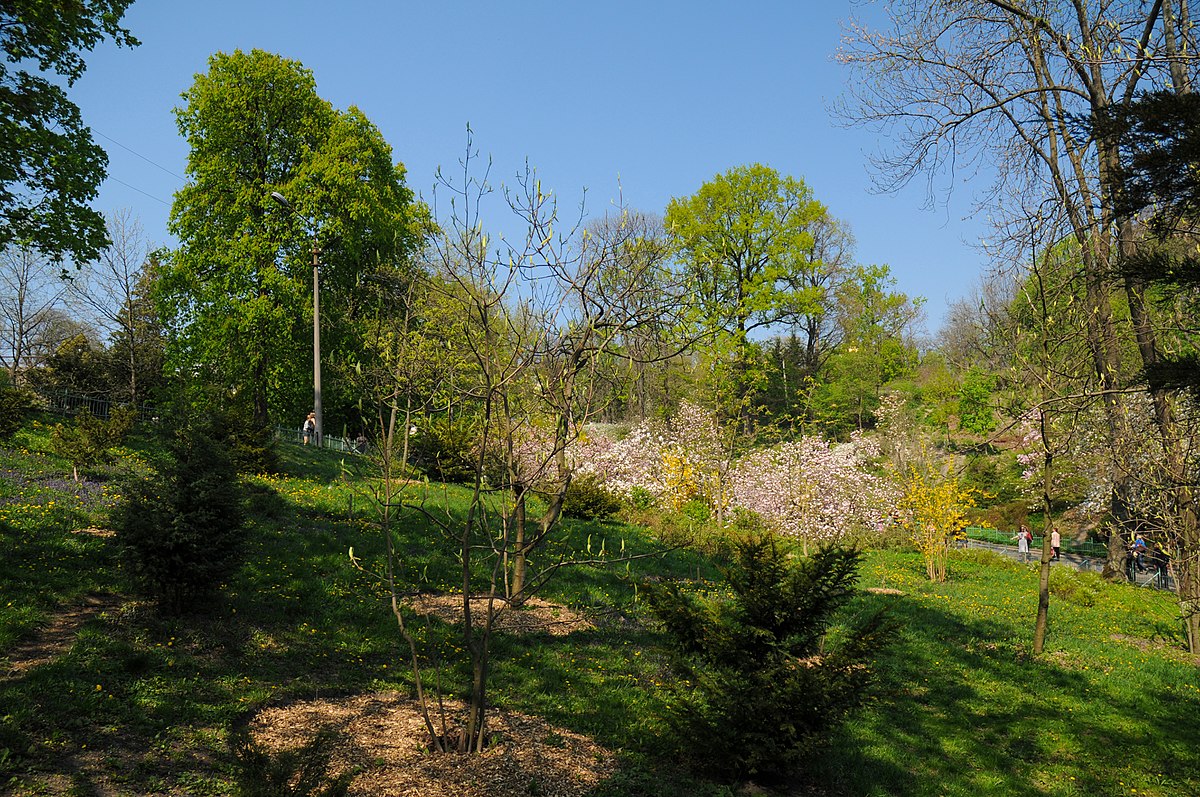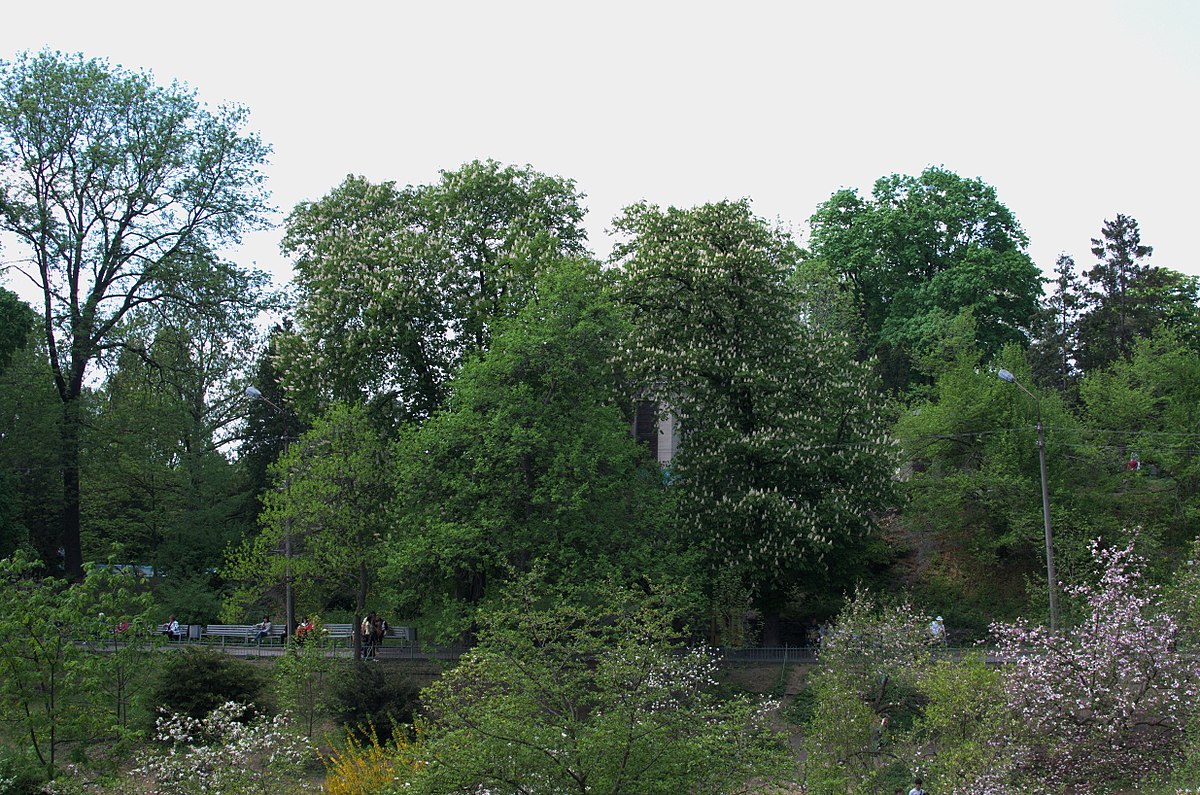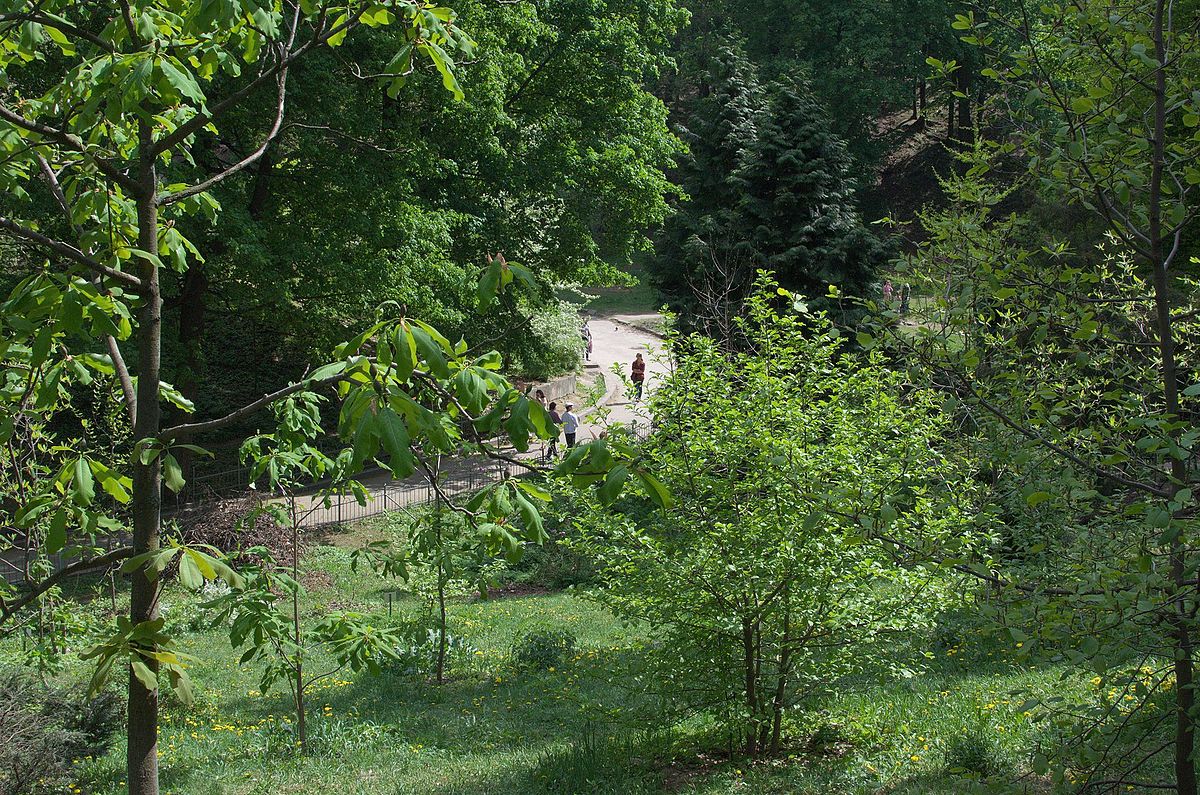The Botanical Garden named after Academician Alexander Fomin is one of the oldest botanical gardens in Kyiv (older than Grishko Botanical Garden) and Ukraine. It is a division of the Shevchenko University of Kyiv. It was founded in 1839 on a vacant lot, in deep ravines and on the hills not far from the university. The garden area is 22.5 hectares. In creating the garden, collections of plants from the botanical garden of the Kremenets Lyceum were used, as well as plants grown from seeds sent by botanical gardens in Russia and other countries. In the mid-19th century, a greenhouse complex was built for collections of tropical and subtropical plants. Now the botanical garden’s collections include about 10,000 species, varieties and forms of plants. The collection of cacti and other succulents was the largest in the USSR. In 1977, the highest 30-meter climatron with a total area of 1000 square meters was built for some types of palm trees.
The question of creating a botanical garden was raised back in 1834 by the architect Vikenty Beretti, according to whose design the Kiev University of St. Vladimir (now Shevchenko University) was built. He proposed placing the garden in a deserted area located near the university building. For this purpose, more than 500 plants were brought from the Kremenets Lyceum to Kyiv, which were temporarily placed in the Tsar’s (now City) Garden. However, due to lack of funds, the establishment of the garden was postponed for 5 years. Only in 1839 did the Kiev educational district give permission to establish a temporary botanical garden.
In 1841, the botanical garden received permanent status. According to the plan of the architect Laufer, a greenhouse complex was built and terraces were laid out, which have survived to this day. In 1850, the planning and layout of the botanical garden was completed. By 1852, there were already about 25,000 trees and 400 species of bushes, as well as more than 4,000 species of other plants. From 1914 to 1935, until his death after a year of fighting a serious illness, Alexander Fomin was the director of the botanical garden. The director and his employees suffered severe trials during the First World War and the Civil War. However, they managed not only to preserve fragile tropical plants during the reigning devastation, but also to build 3 new greenhouses and repair the greenhouse. In 1935, after Fomin’s death, the garden was named in his honor.
From 1941 to 1943, during the Nazi occupation, many valuable plants from the collection were lost. Some plants were exported to Germany. However, already in the spring of 1944, the garden was open to visitors, and restoration of the garden’s greenhouses and plant collections began. In the 1950s, a secret military facility was built on the territory of the garden “K-2” (government communications station), which is still in operation today. In 1960, the garden was declared a monument of landscape gardening art of republican significance. In 1977, a new, modern greenhouse-climatron was built – one of the largest in the world at that time. In 2004, a museum of the history of the Fomin Botanical Garden was created. The museum, like the garden itself, is a scientific and educational center, conducts tours of the garden, and takes part in the educational work of the biological faculty of Kyiv Shevchenko University.
Where is the Fomin Botanical Garden?
Simon Petlyura Street, 1
(044) 234-60-56




